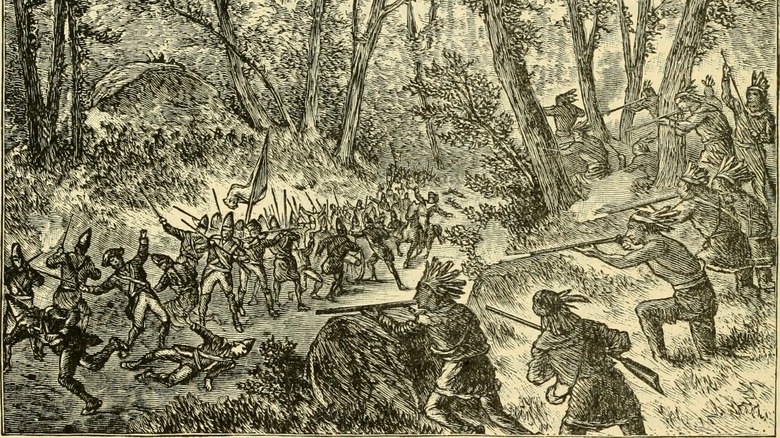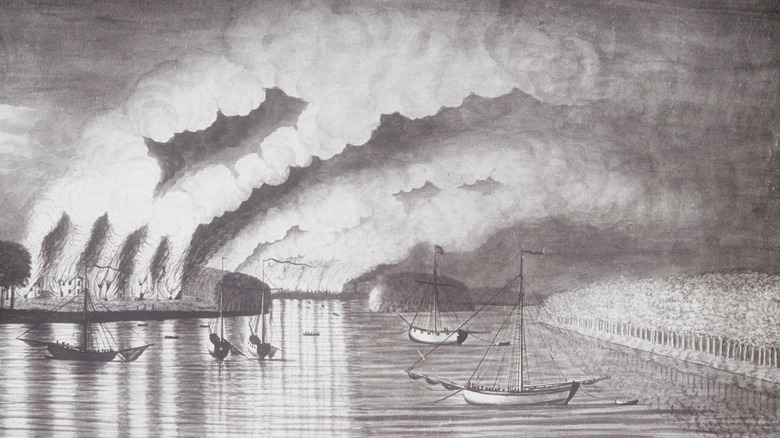This Is What Really Happened To Florida During The French And Indian War
Lots of time in our U.S. history classes is spent on the American Revolution as the pivotal event that led to the creation of the country, but a preceding conflict was just as momentous in the United States gaining independence from England. The French and Indian War was fought from 1754 to 1763, and despite its name, it was not a war between the French and American Indians, but rather between France and Britain. Native Americans did, however, ally with both sides, primarily with the French.
According to Mental Floss, George Washington led the battle that started the war and even came quite close to not returning from the battlefield at one point. In 1755, went into battle despite the unfortunate circumstance of suffering from both dysentery and hemorrhoids. He just plopped a cushion on his saddle and charged into battle. Believing that the French would line up in columns and march out onto the battlefield in the old school European style, Major General Edward Braddock lined up his red coats and set them to marching. However, having aligned with Native Americans who practiced guerilla warfare, the British columns were ambushed from behind trees and bushes, and they retreated after losing more than a third of their men. Washington barely survived. He later wrote his brother that he had four bullet holes in his coat after the fighting was finished. Had one of those bullets landed, the United States may never have existed.
Spain lost Florida — for the first time — in the French and Indian War
By 1762, Britain had started to get the upper hand in the war, but now Spain wanted in on the action. According to the U.S. Office of the Historian, King Charles III of Spain decided to help out his cousin, King Louis XV of France. He promised to hop in on the fun if the war hadn't ended by May 1, 1762, but the British preempted the deal and declared war on Spain on January 4, 1762.
Spain would ultimately regret the decision to join the war. The British forces were too much for even the French, Spanish, and Native American allies, and peace talks began in 1763. The French and Indian War was brought to an end with the signing of the 1763 Treaty of Paris, which transferred all French territories east of the Mississippi River to England. And since Spain had hopped in on the tag team, this included Spanish-owned Florida, as well. But it wouldn't be the first time Florida slipped through Spain's fingers. The empire would regain control of the territory after the American Revolution, only to lose it again — and for good this time — to the United States in 1821.

